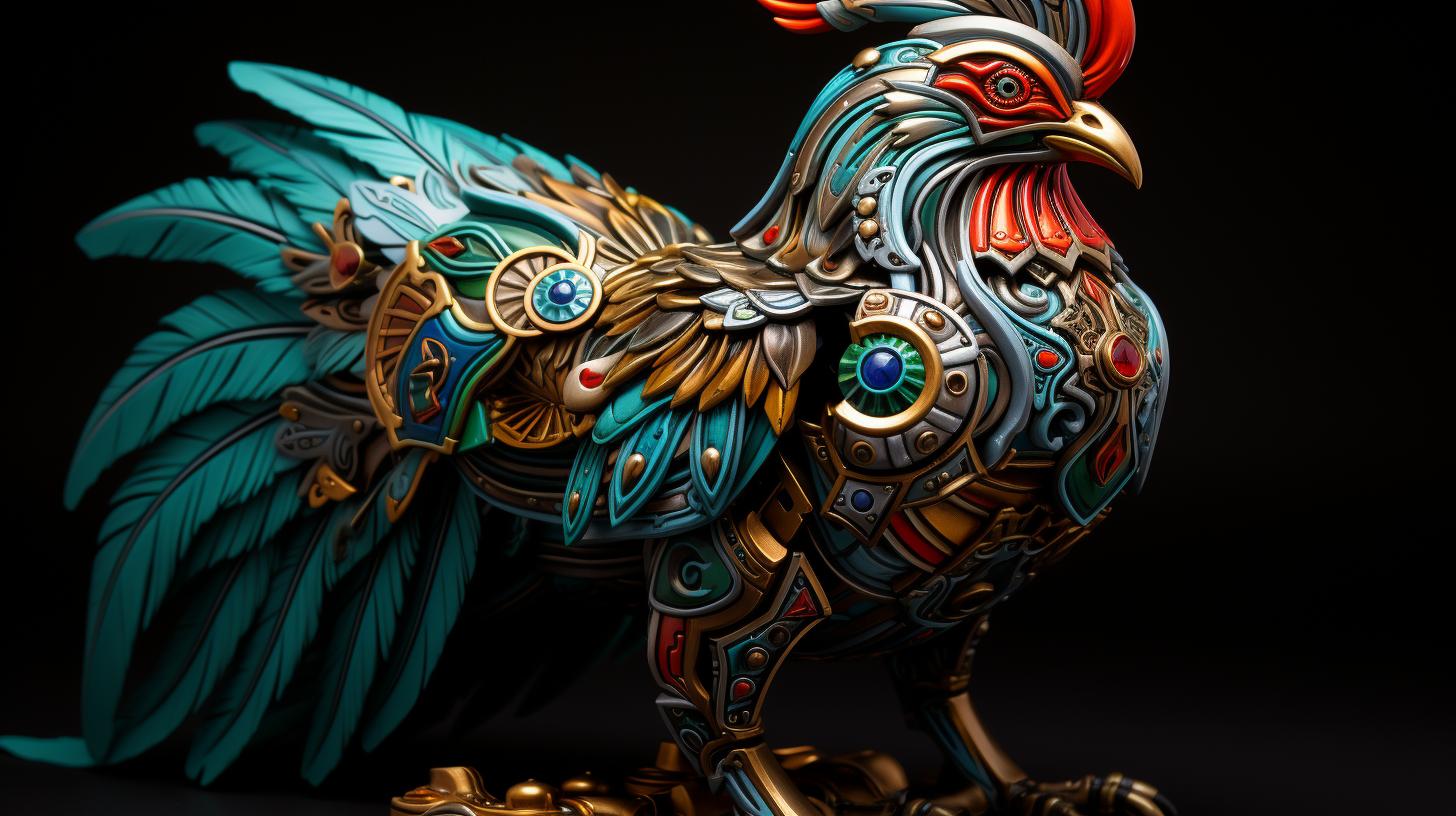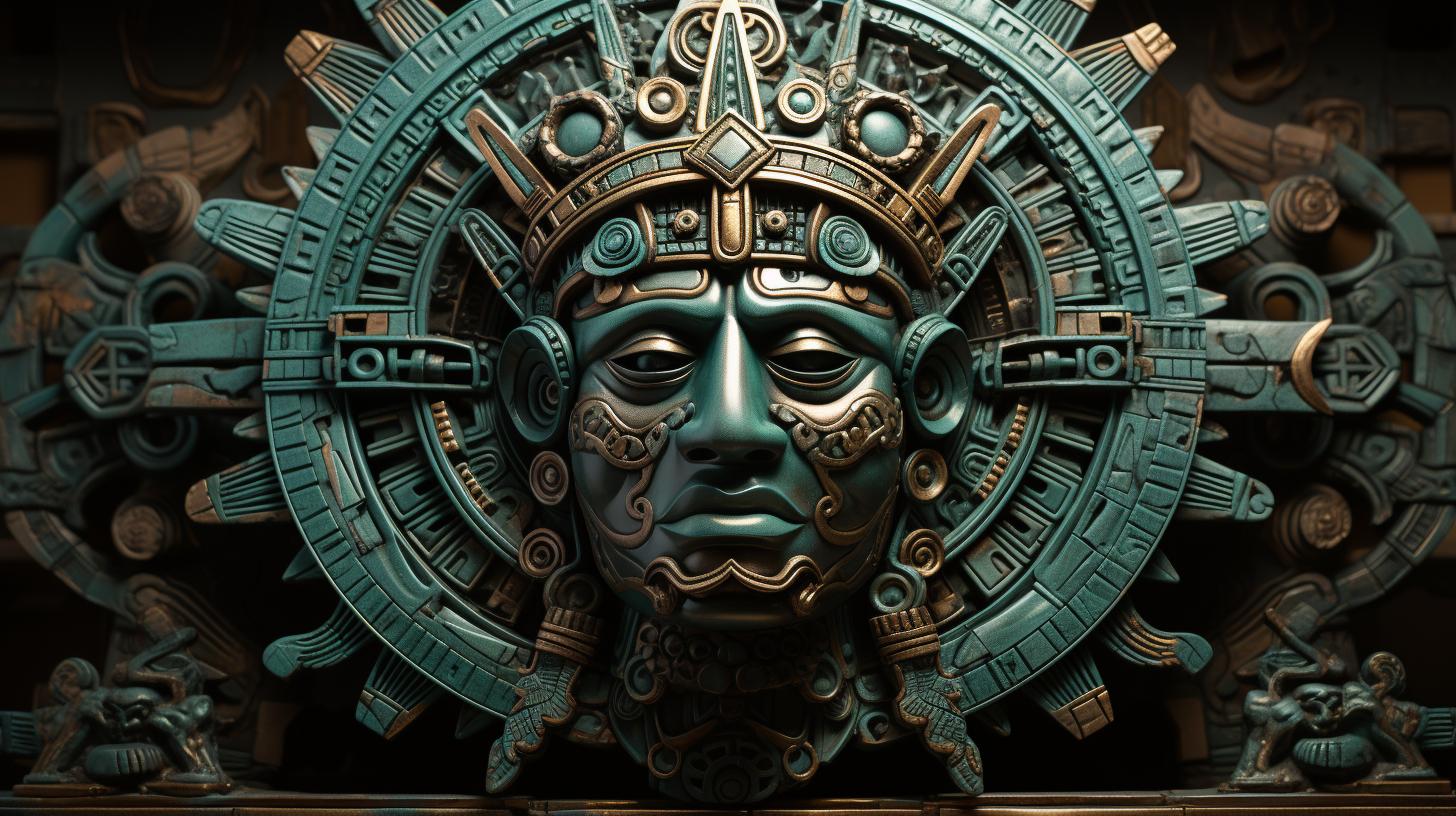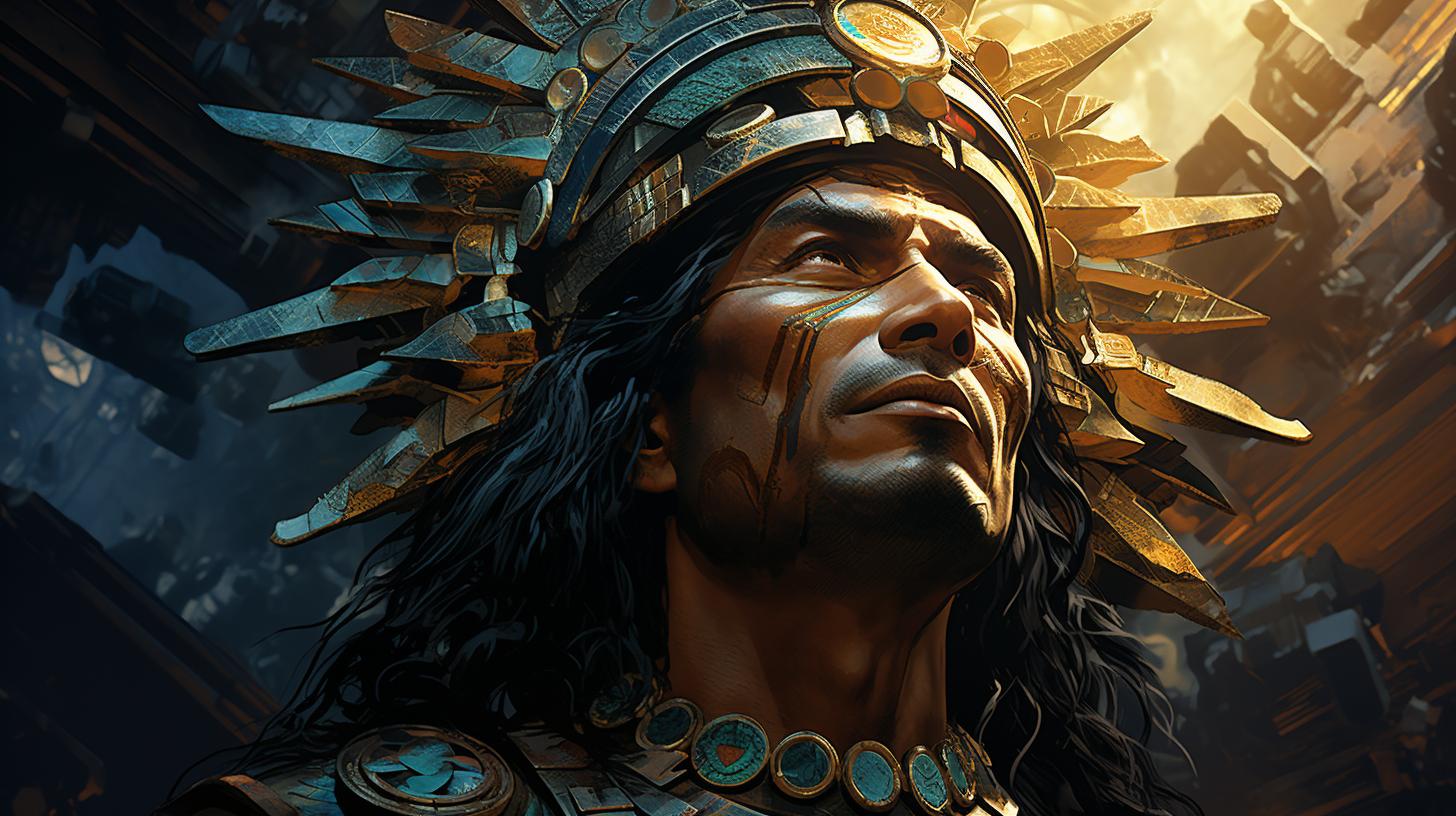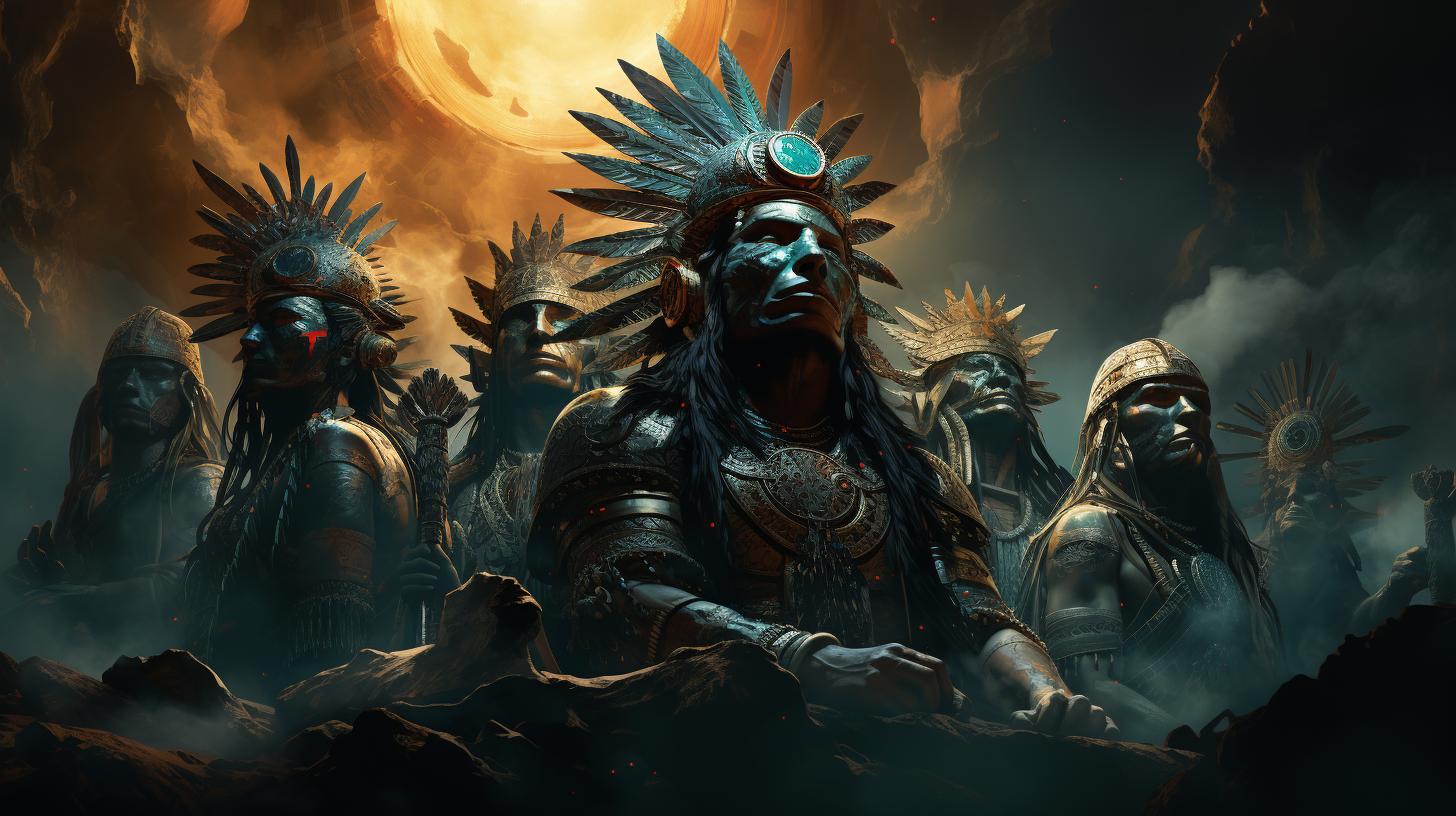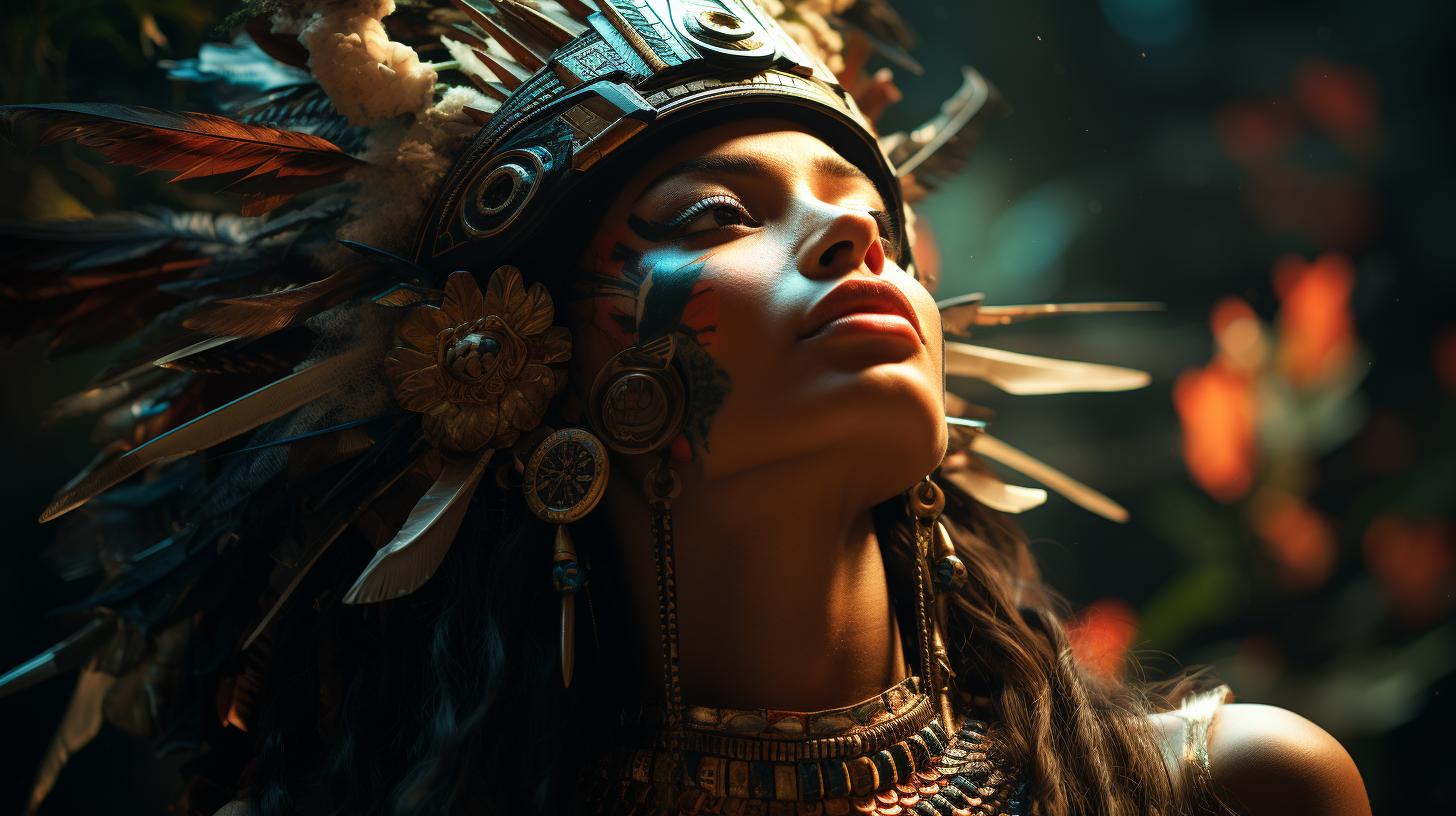Aztec Goddess Tlazolteotl: Unveiling the Power of Regeneration and Forgiveness
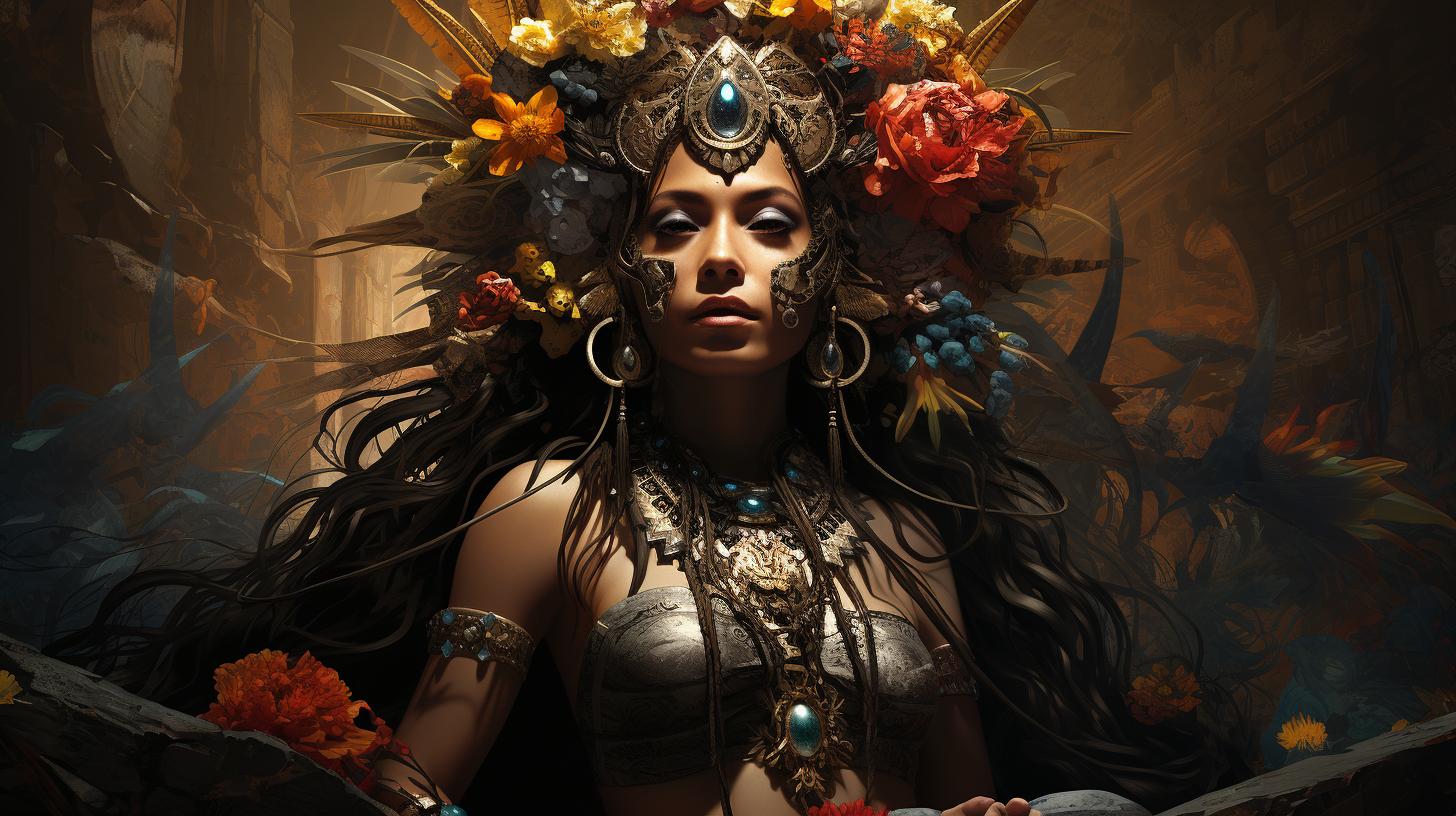
The Aztec goddess Tlazolteotl holds a significant role in Aztec culture, representing purification, regeneration, and forgiveness. With a rich historical background, Tlazolteotl embodies the interconnection of life’s aspects. Through ancient artwork and iconography, her divine attributes are honored.
Tlazolteotl’s unique role among Aztec goddesses influences other deities and holds symbolism in fertility and creation. Explore the legacy of Tlazolteotl in art, history, and contemporary culture, as she continues to captivate with her power and significance.
The Aztec Goddess Tlazolteotl
The Aztec goddess Tlazolteotl holds a significant place in Aztec mythology and culture. She is an enigmatic deity associated with various aspects of life, ranging from purification to fertility. To comprehensively understand Tlazolteotl’s significance, it is crucial to delve into her historical background and explore her multifaceted role in Aztec society.
Historical Background of Tlazolteotl
Tlazolteotl’s roots can be traced back to the lands of the Gulf of Huaxteca, where she was introduced to the Aztecs. As a complex mother earth deity, Tlazolteotl was known in four distinct forms, each associated with different life stages.
From her youthful guise as a carefree temptress to her mature manifestation as the great goddess capable of absorbing human sin, Tlazolteotl’s evolution reflects the intricacies of human experience.
Role and Significance of Tlazolteotl in Aztec Culture
One of the most captivating aspects of Tlazolteotl’s character is her ability to inspire both carnal desire and sinful behavior while offering absolution and forgiveness.
She became renowned for her role in cleansing sins during confessions conducted by her priests. Through this dual nature, Tlazolteotl demonstrates the power of transformation and holds the potential to eliminate corruption from the world.
Identified by her blackened lips and teeth, conical headdress, and often depicted in a birthing posture, Tlazolteotl is comparable to Venus in Roman mythology. She is associated with sexuality, provoking and pardoning licentious behavior.
Additionally, Tlazolteotl embodies lunar and agricultural attributes, symbolized by her association with the jaguar and the ritualistic calendar.
Regarded as a sacred figure across various Mesoamerican societies, including the Huastecs, Mixtecs, Olmecs, and Aztecs, Tlazolteotl is not only a devourer of sins but also a patron of spinning and weaving, particularly with cotton.
She is intertwined with the feminine cycle and the regenerative aspects of life.
As Tlazolteotl-Tlaelcuani, the forgiver of sins, her clergy listens to confessions and grants absolution. She is linked to purifying, expiating, and regenerating, transforming waste into life.
Tlazolteotl embodies the cycle of life, death, and rebirth, exemplified through her birthing posture, the Huastec conical headdress, and the peeled skin of sacrificial victims.
In summary, Tlazolteotl personifies the regenerative power of the earth and the interconnectedness of all aspects of life.
With her rich history and multifaceted role, Tlazolteotl remains an enigmatic and influential figure in Aztec culture.
Tlazolteotl Art and Iconography
The art and iconography related to Tlazolteotl offer fascinating insights into the beliefs and cultural significance surrounding this Aztec goddess. Depicted in various visual representations, Tlazolteotl is often depicted with distinctive features that distinguish her from other deities.
One common depiction of Tlazolteotl shows her with blackened lips and teeth, symbolizing her role as the “devourer of sins.” This characteristic attribute reflects her transformative power to cleanse and purify individuals from their wrongdoing.
Additionally, she is often portrayed wearing a conical headdress or riding a broomstick, which further reinforces her association with magic and witchcraft.
Tlazolteotl’s iconography also frequently includes her in a posture related to childbirth, highlighting her connection to fertility and the life-giving aspects of femininity.
This portrayal represents her role as a powerful creator and nurturer, aligning her with the regenerative forces of nature.
Artistic representations of Tlazolteotl can be found in various mediums, including stone carvings, pottery, and codices.
These artworks not only capture her physical attributes but also depict her involvement in ritualistic practices and mythological narratives.
- Stone carvings often depict Tlazolteotl in dynamic poses, emphasizing her diverse manifestations and roles.
- Pottery vessels adorned with Tlazolteotl’s image are thought to have been used in ritual ceremonies to honor her and seek her divine assistance.
- Illustrations in codices provide detailed visual narratives that shed light on Tlazolteotl’s involvement in mythological stories and cultural rituals.
These artistic representations serve as a visual language through which the Aztecs communicated their beliefs, paying homage to Tlazolteotl’s power and significance in their society.
Tlazolteotl Tattoo Designs: Exploring Symbolism and Meaning
Tlazolteotl, the Aztec goddess of purification and regeneration, holds deep symbolism and meaning in the world of tattoo designs. As a deity associated with cleansing and renewal, getting a tattoo featuring Tlazolteotl can represent a personal journey of transformation and growth.
1. Embracing Transformation: Tlazolteotl’s connection with purification makes her a compelling choice for individuals seeking to embrace personal transformation. Tattoo designs often depict her in different forms, representing the various stages of life and change.
These designs symbolize the power to shed old habits and embrace a fresh start.
2. Symbolizing Rebirth: Tlazolteotl’s role in regeneration aligns her with the concept of rebirth. Tattoo designs featuring symbols like the lotus flower, butterflies, or phoenixes can be used to convey the idea of rising from the ashes and starting anew.
These designs capture the essence of Tlazolteotl’s ability to cleanse and rejuvenate.
3. Invoking Female Empowerment: Tlazolteotl represents the strength and power of femininity. Tattoo designs depicting her as a fierce goddess can serve as a statement of female empowerment.
These designs celebrate the divine feminine energy and the resilience it brings.
4. Balancing Light and Dark: Tlazolteotl’s dual nature, as both a temptress and a forgiver of sins, embodies the complexities of human nature.
Tattoo designs can capture this delicate balance by incorporating contrasting elements such as light and dark, yin and yang, or fire and water. These designs symbolize the constant interplay between good and evil within each individual.
5. Connecting with Ancestral Roots: For individuals with Aztec heritage, Tlazolteotl tattoo designs can serve as a way to connect with their ancestral roots and honor their cultural identity. These designs often incorporate traditional Aztec symbols and motifs, weaving a rich tapestry of history and spirituality.
When considering a Tlazolteotl tattoo, it is essential to collaborate with a skilled tattoo artist who understands the cultural context and symbolism associated with the deity. This ensures that the final design captures the intended essence and brings your personal journey to life.
Tlazolteotl as a Deity of Purification and Regeneration
Within Aztec beliefs, the concept of purification held significant importance. It was believed that individuals could cleanse themselves from their sins and impurities through ritualistic practices. Tlazolteotl played a crucial role as a deity of purification and regeneration in Aztec culture.
The Concept of Purification in Aztec Beliefs
In Aztec cosmology, purification was a spiritual process that aimed to restore balance and harmony. It involved removing stains or impurities that tarnished one’s spirit. The Aztecs held the belief that sins and misdeeds caused spiritual pollution, disrupting the natural order of the universe.
Aztec purification rituals often involved confession, fasting, and self-flagellation as a means to cleanse oneself. It was believed that by purifying their souls, individuals could renew their connection with the divine and restore their spiritual well-being.
Tlazolteotl’s Role in Purifying Sins and Renewing Life
Tlazolteotl played a central role in the purification process, as she was revered as the deity who cleansed and absolved individuals of their sins. She was believed to have the power to transform and transmute spiritual impurities, purging individuals of their wrongdoings and granting them a fresh start.
As the goddess of regeneration, Tlazolteotl provided an opportunity for individuals to be reborn and renewed. Through her guidance and forgiveness, worshippers could shed their past transgressions and embrace a purified existence.
Tlazolteotl’s role as a deity of purification extended beyond individual sins. She was also associated with the purification of the land and community. It was believed that through her rituals and offerings, she could cleanse the collective impurities and renew the vitality of the people.
In essence, Tlazolteotl embodied the transformative power of purification and regeneration in Aztec culture. Her presence allowed individuals to confront and reconcile with their sins, ultimately leading to their spiritual rejuvenation.
Tlazolteotl in Ancient Mexico: Mythology and Ritualistic Practices
Explore the fascinating mythology and ritual practices associated with Tlazolteotl, the Aztec goddess of impurity and sin. Throughout ancient Mexico, Tlazolteotl held a prominent place in Aztec culture, revered for her divine attributes and important associations.
Let’s delve into the divine aspects and symbols linked to her presence, as well as the rituals and offerings dedicated to her.
Tlazolteotl’s Divine Attributes and Associations
Within Aztec mythology, Tlazolteotl is associated with various symbols, each representing different aspects of her divine presence. She embodies the power of regeneration and forgiveness, often portrayed with enigmatic features such as blackened lips and teeth.
As a lunar and agricultural goddess, Tlazolteotl is deeply connected to the natural cycles of life, death, and rebirth. Additionally, her connection to the jaguar and ritualistic calendar highlights her role in guiding spiritual practices.
Rituals and Offerings Dedicated to Tlazolteotl
Devotees of Tlazolteotl engaged in intricate rituals and offerings to honor her essence and seek purification. One such ritual involved confession and absolution, performed by Tlazolteotl’s clergymen or priests. Confessors would divulge their sins to the deity, seeking forgiveness and a fresh start.
Offerings of cotton, a material symbolizing cleansing, were presented at sacred sites or temples dedicated to Tlazolteotl. These rituals aimed to purify the soul and renew spiritual energy, allowing individuals to shed their sins and find inner harmony.
- Confession rituals as a means of seeking absolution from Tlazolteotl
- Use of cotton, a symbol of cleansing, in offerings
- Significance of sacred sites and temples dedicated to Tlazolteotl
By engaging in these rituals and offering sincere devotion, the faithful believed they could align themselves with Tlazolteotl’s regenerative power and experience spiritual transformation.
The practices dedicated to Tlazolteotl provided a pathway towards purification and a renewed connection to the divine.
Tlazolteotl: The Divine Excrement and Fertility Goddess
Tlazolteotl, the Aztec goddess, encompasses various aspects that symbolize the intricate connections between fertility, creation, and the cycle of life in Aztec culture. This section delves into the symbolism of excrement and fertility within Aztec society and explores Tlazolteotl’s profound connection to these concepts.
The Symbolism of Excrement and Fertility in Aztec Culture
In Aztec belief, excrement held significant symbolism as a representation of both waste and potential. It symbolized the transformation of waste materials into nourishment and fertility. Aztecs regarded excrement as a fundamental element in the cycle of life, reflecting the interconnectedness of creation and destruction.
Within the Aztec worldview, fertility was highly valued, as it ensured the continuation of life and prosperity for their civilization. Excrement was seen as a powerful symbol of fertility, as it represented the potential for growth and abundance.
The Aztecs associated excrement with the earth and its ability to nurture and sustain life.
Tlazolteotl’s Connection to Fertility and Creation
Tlazolteotl played a crucial role in the realm of fertility and creation as the divine embodiment of these concepts. As the goddess of both purification and regeneration, she held the transformative power to purify sins and grant new beginnings.
Her association with excrement aligned with her role in fertility and creation. Tlazolteotl was believed to have the ability to transform waste and impurities into fertile soil, thus enabling the growth of new life.
She symbolized the regenerative power of the earth and its ability to bring forth abundance and renewal.
Furthermore, Tlazolteotl’s connection to fertility extended beyond the physical realm and encompassed spiritual and emotional aspects as well.
Through her role as the “devourer of sins,” she offered forgiveness and purification for individuals, enabling them to experience personal growth and transformation.
Overall, Tlazolteotl’s association with excrement and her role as a fertility goddess highlight the profound reverence the Aztecs held for the interconnectedness of life, creation, and regeneration.
Her significance remains woven into the cultural fabric of ancient Mexico and continues to inspire awe and fascination in contemporary art and understanding.
Aztec Goddesses and Tlazolteotl’s Unique Role
A Comparative Analysis of Aztec Goddesses
Aztec mythology is abundant with a pantheon of powerful deities, with each goddess possessing unique characteristics and roles. It is fascinating to compare the attributes, symbolism, and worship associated with these Aztec goddesses.
From the nurturing motherly figure of Coatlicue to the fearsome warrior goddess Itzpapalotl, the diversity of Aztec goddesses reflects the multifaceted nature of their culture.
Tlazolteotl’s Influence on Other Aztec Deities
Among the many Aztec goddesses, Tlazolteotl stands out for her distinctive influence on both religious and societal aspects.
As the goddess of purification and regeneration, Tlazolteotl’s actions and beliefs intertwined with those of other deities. She not only played a crucial role in cleansing sins but also contributed to the cycle of life, death, and rebirth.
Through her unique influence, Tlazolteotl inspired reverence and awe among both the Aztec people and other spiritual beings.
Tlazolteotl’s association with fertility and creation linked her to the divine forces of life.
Her role in absorbing human sins allowed for spiritual rejuvenation and the opportunity for individuals to seek redemption. This interconnectedness fostered a sense of harmony and balance within the Aztec pantheon, as different deities worked together to maintain cosmic order.
Furthermore, Tlazolteotl’s imagery and symbolism permeated depictions of other goddesses. In various artistic representations, we can see elements that connect these goddesses to Tlazolteotl. Whether it’s the blackened lips and conical headdress adorning figures like Xochiquetzal or the transformative power associated with Chalchiuhtlicue and Xilonen, Tlazolteotl’s influence echoes through the pantheon.
In conclusion, Aztec goddesses held distinct roles and characteristics, and Tlazolteotl’s unique influence among them further emphasized the interconnectedness of the divine beings. By examining the comparative analysis of Aztec goddesses and understanding Tlazolteotl’s impact on the pantheon, we gain deeper insights into the rich mythology and religious practices of the Aztec civilization.
The Legacy of Tlazolteotl in Art and History
The representation of Tlazolteotl in ancient artifacts and codices provides valuable insights into the significance and reverence of this Aztec goddess. These depictions showcase her multifaceted nature and the important role she played in Aztec culture.
Representation of Tlazolteotl in Ancient Artifacts and Codices
Through ancient artifacts such as pottery, sculptures, and jewelry, we can glimpse the visual interpretation of Tlazolteotl. She is often depicted with distinctive attributes, including blackened lips and teeth, a conical headdress, and sometimes in a birthing posture.
These artistic representations capture her power and symbolism, emphasizing her role as the devourer of sins.
Aztec codices, such as the Codex Borgia and the Codex Fejérváry-Mayer, also feature elaborate illustrations of Tlazolteotl.
These intricate pictorial narratives reveal her connection to fertility, regeneration, and the cycles of life. The imagery depicts rituals, offerings, and the transformative power associated with her presence.
Tlazolteotl’s Impact on Contemporary Art and Culture
Tlazolteotl’s legacy extends beyond ancient times, influencing contemporary art and culture.
Artists, both of Aztec descent and from diverse backgrounds, draw inspiration from her rich mythology and symbolism.
Her image can be found in various art forms, including paintings, sculptures, and tattoos.
These modern interpretations often explore her themes of purification, forgiveness, and the regenerative power of the earth. Tlazolteotl’s role as a powerful female deity resonates with artists and audiences alike, transcending time and cultural boundaries.
Furthermore, Tlazolteotl’s influence extends beyond the realm of art. Her presence can be felt in literature, music, and even fashion, where her symbolic representation adds depth and meaning to contemporary creations.
As society evolves, Tlazolteotl continues to inspire and empower individuals seeking connection with ancient wisdom and spiritual rejuvenation.
.













